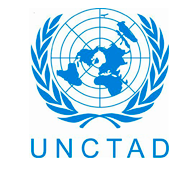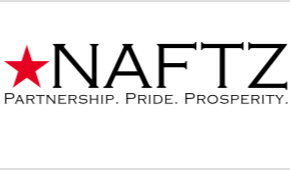Tempo de leitura: 7 minutos
There is a global trend of providing special facilities to businesses to join the global supply chain and expand business to other markets. Businesses get advantage from bonded warehouses and free trade zones (FTZs) while joining international supply chains. These facilities relate to global trends in manufacturing, outsourcing, business mobility and the whole process is known as globalisation.
Bonded warehouses and FTZs are secure areas in which imported dutiable merchandise or raw materials are stored until these undergo manufacturing operations without the payment of duties for a period of time. The legal distinction between bonded warehouses and FTZs is that products held in bonded warehouses are legally within the customs territory of the country, while products held in FTZs are outside the customs territory despite their physical presence.
Bonded warehousing is a customs procedure allowing the import of goods for storing in a secure area without payment of import taxes until the goods are removed for domestic consumption. Bangladesh customs allow bonded warehouse facilities for raw materials only to exporters. Generally, the duty liability remains on hold until taken to host country with payment of customs duty or re-export of the goods outside the country. This kind of warehouse is permitted to certain exporters or export-oriented industries.
Then there are the export processing zones (EPZ). These are traditional zones acting as a manufacturing/processing area for exports, and considered as outside of customs territory. Factories within this type of a zone are usually labour-intensive and require low skills for production of readymade garments, textiles, shoes, timber, plastic products and electronic components. In general, domestic sales of products manufactured within this zone are limited. Some percentage of products from these zones can be sold in the domestic market.
Despite the similarities between bond license and FTZ tools for optimising global manufacturing and distribution, and managing duties, the differences are stark. A key advantage behind utilising a bonded warehouse or FTZ is that merchandise can be manipulated therein. Product manipulation, including sorting and repackaging, is permitted in bonded warehouses without necessitating importation into the host country.
There are other benefits as well. Companies can store goods for an unlimited period of time in these zones. Furthermore, they can take an almost unlimited number of actions within the region, including sorting, destroying, cleaning, grading, mixing, labelling, assembling, producing, exhibiting, selling, and repacking their products. Plus, at the FTZs, logistics professionals enjoy 24-hour control over their goods allowing them to move products in and out of the zone with very few restrictions.
However, bonded warehouses offer limited options for manufacturing operations. FTZs permit product manipulation as well as to allow manufacture and other substantial changes without importation and re-export.
The special economic zone (SEZ) is a zone that contains several industries and traders who are enjoying the same facilities. It is a special facility focused at improving customs facilitation to make the regime more attractive to foreign investors and importers. Such measures could include (1) no time limit on storage of goods in the zone; (2) waiving taxes on other processes, such as storage, repacking and cleaning and allow the movement of products from one zone to another ‘in bond’; (3) allowing tax free transactions between counter-parties of goods stored in the zone regardless of the domicile of the owner of the goods; and (4) removing the domestic tax registration requirement/domestic tax liability for foreign parties who only operate within the zone.
Following are four main characteristics of a free trade zone: (1) Fenced-in industrial estates specialising in manufacturing for export and offering their resident firms free-trade conditions and a liberal regulatory environment (World Bank, 1992); and (2) Industrial zones with special incentives set to attract foreign investors, in which imported materials undergo some degree of processing before being re-exported (ILO, 1998).
In accordance with the International Convention on the Simplification and Harmonization of Customs Procedures, an FTZ refers to an area where goods may be landed, handled, manufactured or reconfigured, and then re-exported without the intervention of customs authorities.
The definition of a free trade zone, as well as proposed guidelines and standards for them, are contained in the Revised Kyoto Convention of the World Customs Organisation (WCO). Tax-free trade zones, (FTZs), also known as special economic zones (SEZs), are public or private duty-free areas where goods may be warehoused, processed, sold, serviced, distributed, showcased, packaged, labelled, sorted, assembled and/or manufactured as finished goods prior to their re-exporting as duty-exempt finished products.
As a general rule, FTZs are basically governed by the laws of the host country, where the FTZ is located as well as the laws of the country that owns the FTZ. Most FTZs are located in places that have natural and physical advantages, like near an airport or a body of water. Even though FTZs are governed by the domestic law of the host, that law should be in line with international trade laws and rules.
Free-Trade Zones are frequently used for storage, testing, cleaning, processing, assembling, manufacturing, re-labelling, repackaging, exhibition and repairing of merchandise. Unlimited time frame and entry & payment of duties are only filed on cargoes entering the commerce of the United States upon exiting the zone. It can handle merchandise Foreign & Domestic Merchandise.
Manufacturing is now a part of the global supply chain. Manufacturers must think of most cost effective processes prior to manufacturing, assembling and disassembling, organising, sorting, distributing, storing and selling products to the end-buyers. They are now also taking into account the costs of schlepping cargo in between all these locations.
Suppliers, manufacturers, shippers, and logistics professionals should consider much more than just the transportation leg of their products’ journeys. Perhaps the other biggest single factor in supply chain management concerns storage and warehouse distribution.
There are five types of free trade zones. These are: (i)commercial free trade zones; (ii) traditional export processing zones (EPZs) for export manufacturing purposes only; (iii) free enterprises for single unit EPZs; (iv) hybrid EPZs, where only part of a large area is an EPZ, and (v) free port special economic zones whose objective is to achieve integrated development.
Some of these are a “fenced-in industrial estate in a developing country for overseas investors for tax breaks, with comparatively low paid labourers”. Traditional export processing zones (EPZs) are as big as an entire cosmopolitan designated as a SEZ like Shenzhen or Hong Kong in China or a port that serves as a base for many types of trade-related activities.
A special or free economic zone covers a large area, including residential areas and hospitals, schools and other business and supporting facilities and infrastructures. It promotes foreign direct investment (FDI) by providing a good business environment with several incentives, such as a global standard for labour regulation, allowance of repatriation and reduction of taxation for foreign investment, all of which may not be controlled under domestic regulation but under specially designed regulation appropriate to the nature of the facility.
A bonded warehouse facility is provided to export oriented industries for importing inputs/raw materials and packaging materials without paying any duty or taxes. The National Board of Revenue (NBR) provides such bonded warehouse benefits to a wide range of industries to encourage export oriented industrialisation and to facilitate exports. The facility is provided while keeping in line with the provisions under Sections 84-119 of the Customs Act, 1969 (Chapter 11).
Bonded warehouses are permitted to store raw materials for export oriented industries or re-export to other countries. This facility was primarily given to garment exporting industries and subsequently permitted to backward linkage industries. Gradually other sectors are also receiving the facility now. But the government can consider FTZs given our successful experience and expertise in EPZs.
Bangladesh has a strategic location as it is smack-dab in the middle of three biggest markets of the present world: China, India and ASEAN. Bangladesh Economic Zones Authority was established by the Bangladesh Economic Zones Act 2010 with objectives to attract FDI, develop and diversify exports. It can become a manufacturing and trading hub for these markets by opening economic zones for trading and manufacturing products.
While Bangladesh is yet to grasp this opportunity, India has already allowed 10 FTZs focusing on South and South Asian markets.






Os comentários foram encerrados, mas trackbacks e pingbacks estão abertos.